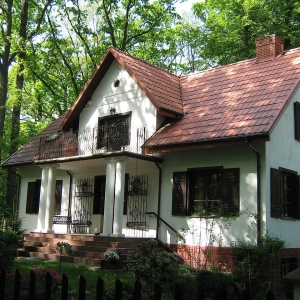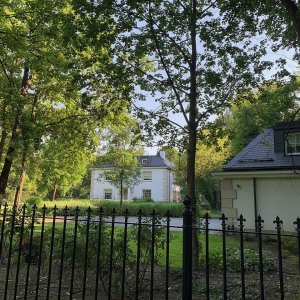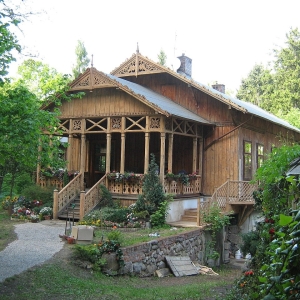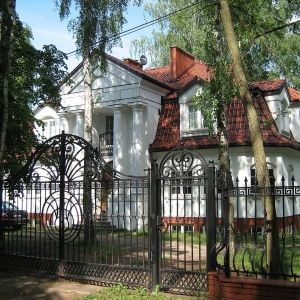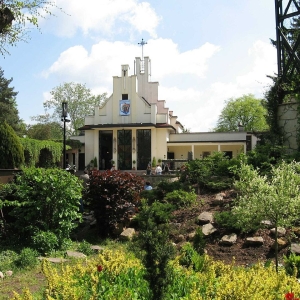
Podkowa Lesna
Warsaw, Poland
Polish garden city Podkowa Leśna near Warsaw was a similar design to Letchworth Garden City.
| Garden City Type: | Mixed (housing association / municipality / other) |
| Country: | Poland |
| City: | Warsaw |
| Years of construction: |
1925 Start construction
|
| Initiator/client: | Stanislaw Wilhelm Lilpop |
| Architect or related: |
Anthoni Jawornicki Jawornicki (1886-1950) was a Polish architect and urban planner from Warsaw. He belonged to the Society of Polish Town Planners, which he co-founded in 1923, and to the Warsaw Branch of the Association of Polish Architects. Biography Anthoni Jawornicki on Society of Friends of the City of Podkowa Leśna Garden (in Polish) The houses |
| Heritage status: | Yes |
| Explanation: | In 1981 Podkowa Lesna was designated area of national importance. |
| General condition of Garden City: | Good condition |
General description
Podkowa Leśna ("Horseshoe Grove") is located 25 km south-west of Warsaw. Stanisław Wilhelm Lilpop had the intention to transform the Podkowiań estate he owned into a garden city, but World War I initially interrupted these plans.
In 1925 Anthoni Jawornicki designs Podkowa Lesna, which he based on the principles of the Garden city movement. Its growth was aided by the construction of the Warsaw Commuter Railway in 1927, which has three stations located in the town. It is therefore easily accessed from central Warsaw. It wasn't a garden city for the 'common man'. Plots were for sale and it attracted many famous figures from cultural, scientific and political life.
Architecture / Urban planning
In a similar design to Letchworth Garden City, the housing was planned in concentric tree-lined streets, organised in a horseshoe shape, with the train station at its centre. Forests surround the city on three sides from the east, south, and north. Currently, Podkowa is inhabited by nearly 4,000 residents on approximately 1,400 residential properties. The original urban layout of the city has not changed to this day.
Sources
- Website URL
Urząd Miasta Podkowa Leśna (The Town Hall of Podkowa Leśna - in Polish)
- Website URL
Towarzystwo Przyjaciół Miasta Ogrodu Podkowa Leśna (Society of Friends of the City of Podkowa Leśna Garden - in Polish)

